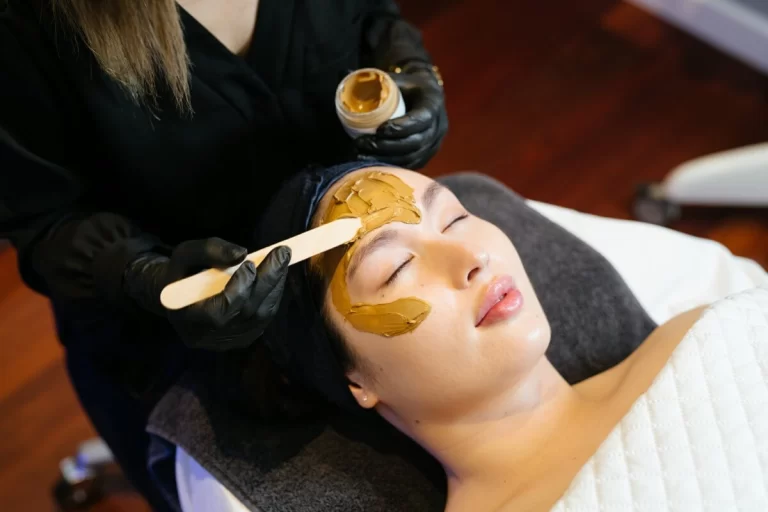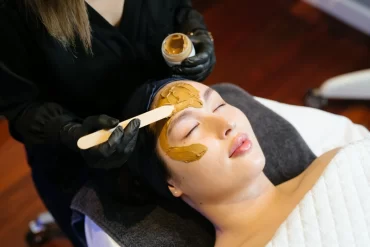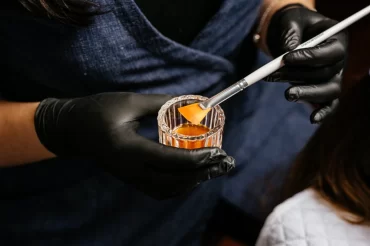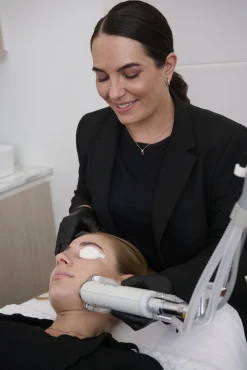Melasma

Melasma appears as areas of blotchy pigmentation, often in a symmetrical pattern across the face.
Melasma is a skin condition characterised by areas of uneven pigmentation, often appearing in a symmetrical pattern on the face. Common areas include the forehead, upper lip and cheeks. It is more frequently seen in women between the ages of 20 and 40, though it can also occur in men.
Melasma often darkens with sun or heat exposure and may lighten during cooler months. While not harmful, the condition can impact confidence and be a persistent concern for many people.
In accordance with Therapeutic Goods Administration (TGA) regulations, we are unable to provide detailed information about specific treatments online. Such information may be misinterpreted as the promotion of prescription-only (Schedule 4) medications – this is not permitted under TGA guidelines.
For this reason, a consultation with one of our practitioners is required. During your comprehensive consultation, your practitioner will carefully assess your skin, discuss your concerns, and provide education around suitable treatment options. A personalised treatment plan will then be created to address your individual needs.
Treatment costs will vary depending on your tailored plan and will be discussed with you in detail during your consultation.
FAQs
Understanding Melasma
Melasma is generally described by how deep the pigment sits within the skin:
- Epidermal (superficial) – pigment sits closer to the surface
- Dermal (deeper) – pigment sits lower in the skin and may be more persistent
- Mixed – a combination of both
Because melasma can vary, it is considered a condition that requires long-term management rather than a single treatment
What causes Melasma?
Melasma occurs when the skin produces more melanin (pigment) than usual.
Contributing factors can include:
- Hormonal influences – pregnancy, oral contraceptives, or conditions such as PCOS
- Sun exposure – UV light is a common trigger and can make existing pigmentation more noticeable
- Genetics – a family history of melasma may increase the likelihood
- Skin type – it is more common in those with medium to darker skin tones
How is Melasma managed?
There is no cure for melasma. Management focuses on controlling triggers, supporting skin health, and reducing the visibility of pigmentation where possible. Results vary and commitment to an ongoing plan is essential.
Key steps include:
- Sun protection – daily broad-spectrum SPF, protective clothing, and minimising sun exposure
- Review of contributing factors – such as hormones or medications, under the guidance of a doctor
Topical products – certain skin care may be recommended to support a more even skin tone. In some cases, prescription creams may be discussed with a doctor.
What are our recommended treatments?
At Youth Lab, we provide a range of treatments that may assist in managing the cosmetic appearance of melasma. Suitability depends on skin type, depth of pigmentation and lifestyle factors, and will be determined during consultation.
Possible options include:
Dermamelan
Dermamelan is a topical mask protocol designed to support more even skin tone.
Clinical Peels
Mild to moderate chemical peels that exfoliate the skin’s surface, which may help improve the appearance of pigmentation in more superficial cases.
Halo Laser
Laser is fractional resurfacing technology, considered in selected cases where pigment is closer to the surface.
Skin Needling
Collagen induction therapy, sometimes combined with pigment-modulating serums, for certain presentations of melasma.
Please note:
- Melasma is a chronic condition that can fluctuate over time.
- Ongoing management and sun protection are essential to help reduce flare-ups.
- Treatment outcomes vary between individuals, and multiple approaches may be needed.
- A full consultation is required before any treatment plan can be recommended.



